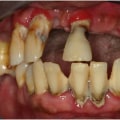Root canals and extractions are two of the most common oral health treatments that dentists recommend. While root canals are used to save a tooth that is severely damaged or infected, extractions are used to remove a tooth that is no longer viable. In this article, we will provide an overview of these two treatments, including what to expect and how to prepare for them. Root canals and extractions both require a great deal of skill and knowledge from the dentist who performs them, as well as time and patience from the patient.
We will explain the differences between these two treatments, what to expect during the procedure, and how to prepare for them. We will also discuss the risks associated with root canals and extractions, and what steps you can take to ensure the best possible outcome. Whether you are facing a root canal or an extraction, it is important to be as informed as possible about the treatment options available to you. This article will provide an in-depth look at root canals and extractions, so that you can make an informed decision about your oral health.
Root Canals and Extractions
are two of the most common oral health treatments.Root canals involve removing infected or decayed tissue and replacing it with a filling, while extractions involve removing teeth that are either damaged or not needed. Knowing the different types of root canals and extractions, as well as their advantages and disadvantages, can help you make the right choice for your oral health needs.
Endodontic Surgery
is a type of root canal procedure that requires a small incision to be made in the gum to access the pulp chamber of the tooth. During this procedure, the dentist will remove any diseased or infected tissue, as well as any damaged nerves or blood vessels.They will then fill the area with a biocompatible material to protect it from further decay. Endodontic surgery is usually recommended for teeth with severe damage or infection that cannot be treated with other root canal procedures. The advantages of this type of procedure include a higher success rate and less discomfort than other root canal treatments. The disadvantages include the need for anesthesia, a longer recovery time, and a higher cost.
Apicoectomy is another type of root canal procedure that involves making an incision in the gum and removing the tip of the root of the affected tooth. This procedure is usually performed when other root canal treatments have failed, or if there is an infection in the area that needs to be addressed. The advantages of an apicoectomy include a higher success rate and less discomfort than other root canal treatments.
Crown Lengthening
is a procedure that involves cutting away some of the gum tissue to expose more of the crown of a damaged tooth.This procedure is usually performed when there is not enough healthy tooth structure remaining to support a dental crown or when there is an infection that needs to be addressed. The advantages of crown lengthening include a higher success rate and less discomfort than other root canal treatments.
Tooth Extraction
is a procedure in which a tooth is completely removed from its socket in the jawbone. This procedure is usually performed when there is severe decay or damage to a tooth that cannot be treated with other root canal treatments.The advantages of tooth extraction include a higher success rate and less discomfort than other root canal treatments. When preparing for any type of root canal treatment or extraction, it’s important to discuss all options with your dentist so you can make an informed decision about which treatment is right for you. It’s also important to ask your dentist about the type of anesthesia they will use, the risks involved with each procedure, and any aftercare instructions that may be necessary. Additionally, it’s important to practice good oral hygiene habits such as brushing twice daily and flossing daily to prevent the need for future root canals or extractions.
Tooth Extraction
A tooth extraction is a dental procedure in which a tooth is removed from its socket in the jaw bone.This procedure is typically done when a tooth is severely damaged, decayed, or infected beyond repair. Tooth extraction is also necessary for teeth that are overcrowded and need to be replaced with dental implants, bridges, or dentures. The procedure for a tooth extraction is relatively simple. First, the dentist numbs the area around the tooth to be extracted.
This can be done with a local anesthetic or a sedative. The dentist then loosens the tooth from its socket and gently removes it. After the tooth has been removed, the dentist may place stitches or a gauze pad to help stop any bleeding. Although tooth extraction is generally safe, there are potential risks involved.
Complications such as infection, dry socket, and nerve damage can occur. It is important to discuss any concerns or potential risks with your dentist prior to the procedure.
Apicoectomy
An apicoectomy is a surgical procedure used to treat a persistent infection of the root end of a tooth. It is usually recommended when a root canal treatment has been unsuccessful in eliminating the infection. During an apicoectomy, the end of the root is removed and a small amount of surrounding bone is removed to access the infected area.A small filling material is then placed at the end of the root and the area is sealed off. Apicoectomies can be used to treat a variety of dental issues, including an abscessed tooth, a periodontal condition, or a cyst. They can be used in cases where the infection has spread beyond the root of the tooth and other treatments have been unsuccessful. Apicoectomy may also be necessary when a root canal treatment was not performed properly. An apicoectomy offers several advantages over other procedures.
It can help preserve more of the natural tooth structure and helps reduce the chances of an infection recurring. It is also less invasive than many other treatments. Before undergoing an apicoectomy, it is important to discuss all available options with your dentist. They will be able to advise you on the best course of action and explain any risks associated with the procedure.
It is also important to practice good oral hygiene and maintain regular dental visits.
Endodontic Surgery
Endodontic Surgery is a type of root canal treatment that involves the surgical removal of diseased tissue from the root canals of a tooth. It is typically used to treat infections that have spread beyond the root canals, or to remove diseased dental pulp that cannot be reached by traditional root canal treatments. Endodontic surgery is more invasive than other root canal treatments, and typically requires local anesthetic and sedation. The procedure itself involves making an incision in the gum tissue to expose the bone and soft tissue around the root of the tooth.The root canals are then accessed through this opening, and any diseased pulp is removed. Once the area is cleaned, the root canals are sealed to prevent further infection. Endodontic surgery may also involve the placement of a dental implant to support a crown or bridge. Endodontic surgery is often used as a last resort for treating severe tooth decay, trauma, or infection. It is typically used when traditional root canal treatments are unable to reach all of the affected tissue or when there is an increased risk of infection due to a damaged or weakened tooth structure.
Endodontic surgery is also used in cases where a tooth has been cracked or fractured, as it allows access to the entire area for cleaning and sealing. Although endodontic surgery is more invasive than other root canal treatments, it offers several advantages. It can provide access to areas that cannot be reached with traditional treatments, and it can also help to preserve healthy tooth structure. In addition, endodontic surgery can be used to repair a damaged or weakened tooth structure, which can reduce the risk of further damage or infection.
Crown Lengthening
Crown lengthening is a procedure in which the gum tissue and bone around a tooth is surgically reshaped or removed. It is often necessary to make a tooth more accessible for restorations such as a crown or bridge, and can also help improve the appearance of a smile.Crown lengthening can be done on both the front and back teeth, depending on the individual's needs. The procedure involves removing excess gum tissue and bone from around the affected tooth, which is then reshaped to expose more of the tooth. This can also help even out the gum line, which helps to give teeth a more balanced and symmetrical appearance. The end result is a more aesthetically pleasing smile.
In some cases, crown lengthening may be necessary if there is not enough tooth structure visible above the gum line for a restoration. By reshaping the gum tissue and bone, more of the tooth will be exposed and restorations can be applied safely and securely. Crown lengthening may also be necessary if there is decay in the area, as it can help to make the affected area more accessible so that it can be treated properly. In addition, this procedure can be used to treat cases of gum disease, as it can help to reduce the amount of bacteria present in the mouth.
Before undergoing crown lengthening, patients should discuss their options with their dentist so that they are aware of any potential risks or complications associated with the procedure. It is important to note that crown lengthening can cause some discomfort during and after the procedure, so patients should be prepared for this. In conclusion, root canals and extractions are two of the most common oral health treatments. Endodontic surgery, apicoectomy, crown lengthening, and tooth extraction are all procedures with their own unique advantages and disadvantages.
It's important to understand the different types of procedures available, their advantages and disadvantages, and how to prepare for them. By doing so, you can help ensure that your experience with these treatments is as positive as possible.






